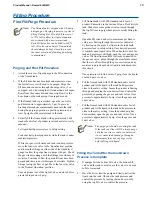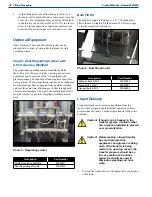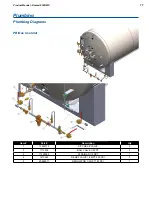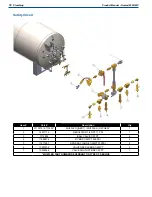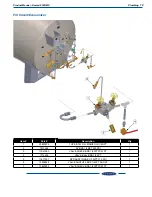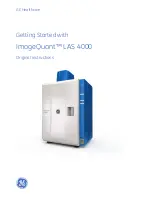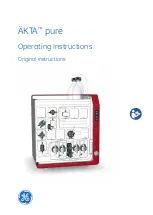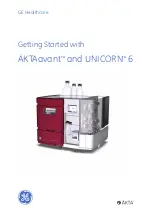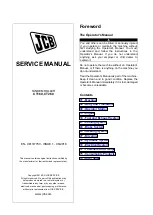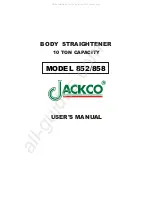
4
Safety
Product Manual - Nomad 830G MP
The remainder of this safety bulletin addresses those adverse
environments that may be encountered when a cryogenic
container has been severely damaged. These are oxygen
deficient atmospheres, oxygen enriched atmospheres, and
exposure to inert gases
Caution! Before locating oxygen
equipment, become familiar
with the NFPA standard No.
55 “Compressed Gases and
) and with all local safety
codes.
Oxygen Deficient Atmospheres
Warning! Nitrogen and argon vapors in air
may dilute the concentration of
oxygen necessary to support or
sustain life. Exposure to such
an oxygen deficient atmosphere
can lead to unconsciousness
and serious injury, including
death.
The normal oxygen content of air is approximately 21%.
Depletion of the oxygen content in air, either by combustion
or by displacement with inert gas, is a potential hazard and
users should exercise suitable precautions.
One aspect of this possible hazard is the response of humans
when exposed to an atmosphere containing only 8 to
12% oxygen. In this environment unconsciousness can be
immediate with virtually no warning.
When the oxygen content of air is reduced to about 15
to 16%, the flame of ordinary combustible materials,
including those commonly used as fuel for heat or light,
may be extinguished. Somewhat below this concentration,
an individual breathing the air is mentally incapable of
diagnosing the situation because the onset of symptoms
such as sleepiness, fatigue, lassitude, loss of coordination,
errors in judgment and confusion can be masked by a state of
“euphoria,” leaving the victim with a false sense of security
and well being.
Human exposure to atmosphere containing 12% or less
oxygen leads to rapid unconsciousness Unconsciousness can
occur so rapidly that the user is rendered essentially helpless.
This can occur if the condition is reached by an immediate
change of environment, or through the gradual depletion of
oxygen
Most individuals working in or around oxygen deficient
atmospheres rely on the “buddy system” for protection -
obviously the “buddy” is equally susceptible to asphyxiation
if he or she enters the area to assist the unconscious partner
unless equipped with a portable air supply. Best protection is
obtained by equipping all individuals with a portable supply
of respirable air. Life lines are acceptable only if the area is
essentially free of obstructions and individuals can assist one
another without constraint.
If an oxygen deficient atmosphere is suspected or known to
exist:
1
Use the “buddy system.” Use more than one “buddy” if
necessary to move a fellow worker in an emergency.
2
Both the worker and “buddy” should be equipped with
self-contained or airline breathing equipment.
Oxygen Cleaning
When replacing components, only use parts which are
considered compatible with liquid oxygen and have been
properly cleaned for oxygen service (Refer to CGA Bulletin
G-4.1 “Equipment Cleaned for Oxygen Service”). Do not
use regulators, fittings, or hoses which were previously
used in a compressed air environment on these tanks. Only
oxygen compatible sealants or Teflon tape should be used on
threaded fittings. All new piping joints should be leak tested
with an oxygen compatible leak-test solution.
Oxygen Enriched Atmospheres
An oxygen enriched atmosphere occurs whenever the normal
oxygen content of air is allowed to rise above 23%. While
oxygen is nonflammable, ignition of combustible materials
can occur more readily in an oxygen rich atmosphere than
in air; and combustion proceeds at a faster rate although no
more heat is released.
It is important to locate an oxygen system in a well
ventilated location since oxygen rich atmospheres may
collect temporarily in confined areas during the functioning
of a safety relief device or leakage from the system.
Oxygen system components, including but not limited to,
containers, valves, valve seats, lubricants, fittings, gaskets
and interconnecting equipment including hoses, shall have
adequate compatibility with oxygen under the conditions
of temperature and pressure to which the components may
be exposed in the containment and use of oxygen. Easily
ignitable materials shall be avoided unless they are parts of
equipment or systems that are approved, listed, or proven
suitable by tests or by past experience

















